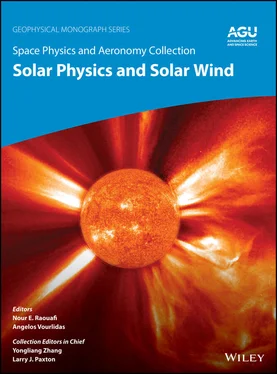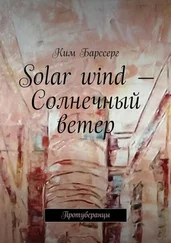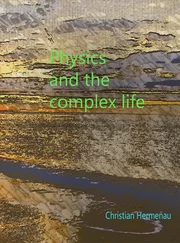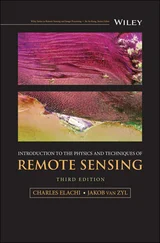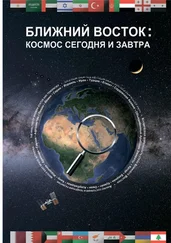Mesoscale structures are not restricted to the HCS. The slow solar wind includes the HCS, but can be observed as far as 30° away from the HCS (Burlaga et al., 1982), and is more generally associated with the boundary between field lines that are open to the heliosphere (coronal holes) and those that are close in the corona (streamers). Numerical modeling shows that open‐closed boundaries can be a complex web of separatrices (the so‐called S‐web; Antiochos et al., 2011) where reconnection is likely to occur. During solar maximum, these separatrices can form a complex web, mapping to many locations away from the HCS in the heliosphere (Crooker et al., 2012; Crooker et al., 2014). Mesoscale structures in the slow solar wind outside of the HCS are observed in density as seen in Figure 1.11taken from Viall et al. (2008), but thye are also observed in magnetic field (Borovsky, 2008), and composition (Viall et al., 2009).
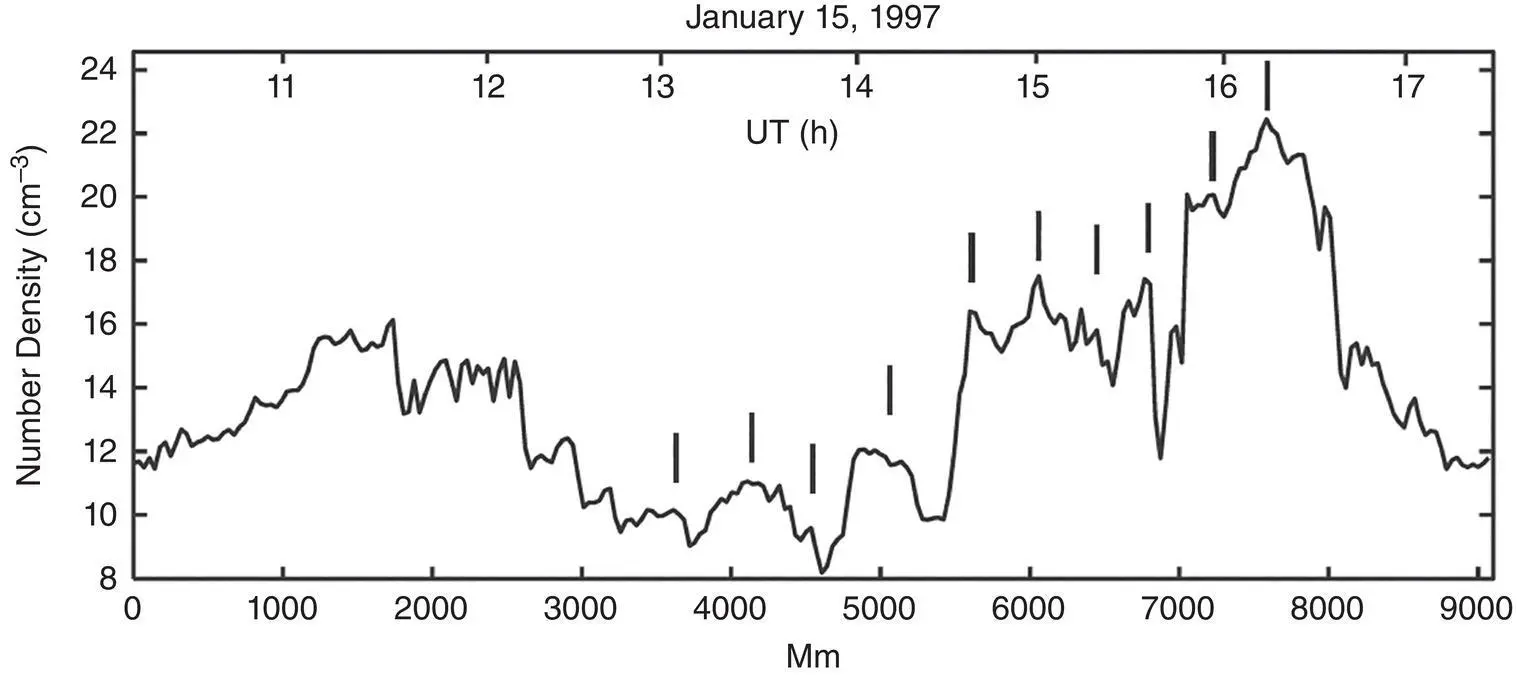
Figure 1.11 Solar wind number density data for 15 January 1997. Bottom x ‐axis is in radial‐length scale steps, top x‐ axis shows the corresponding UT. Tick marks indicate a clear 400 Mm periodicity.
( Source : Taken from Viall et al., 2008. © 2008, John Wiley and Sons.)
It is thought that interchange reconnection could be a source of mesoscale structures perhaps forming at these modeled separatrices (Higginson et al., 2017). One signature expected when interchange reconnection occurs is that the electron strahl—which always flows away from the Sun—is observed to be in the opposite sense expected from the magnetic field direction (Crooker et al., 1996; Crooker et al., 2004; S. Kahler & Lin, 1994; S. W. Kahler et al., 1996), indicating that the magnetic field is locally folded back on itself. Owens et al. (2013) shows these inverted strahl signatures in the slow, dense solar wind at 1 AU associated both with helmet streamers, and with pseudostreamers, also associated with separatrices. Stansby and Horbury (2018) and Di Matteo et al. (2019) argue that signatures of interchange reconnection away from the HCS can be identified in Helios data inside of 1 AU. They identified mesoscale structures using density and showed concurrent temperature signatures, which are retained close to the Sun, strongly suggesting a solar source.
Mesoscale structures also occur in the fast wind. One prominent example is that of microstreams (Neugebauer, 2012; Neugebauer et al., 1995; Neugebauer et al., 1997). Microstreams are observed in the fast, polar solar wind with velocity fluctuations of ±35 km/s, last 6 hr or longer, have higher kinetic temperatures, higher proton flux, and slightly FIP enhanced compared to the rest of the fast solar wind. They are associated with large angle magnetic discontinuities and compositional changes that are consistent with a solar origin. Neugebauer (2012) showed that X‐ray jets and the reconnection that causes them are the most likely sources of microstreams, though they could also be related to polar plumes (Neugebauer et al., 1997; Poletto, 2015). The distinction is difficult, because jets and plumes are themselves related (Raouafi et al., 2016). Simulations support the plume–microstream connection (Velli et al., 2011), and the jet–microstream/Alfvén wave connection (Karpen et al., 2017).
Horbury et al. (2018) found even smaller structures in Helios data at 0.3 AU, lasting tens of seconds to minutes, and reaching up to 1000 km/s. They are Alfvénic in nature, exhibiting large magnetic field deflections. These structures may form during jets from the chromosphere and/or low corona. Borovsky (2016) showed hours‐long structures in the fast solar wind with large variations in number density, temperature, magnetic field strength, composition, electron strahl, and proton specific entropy, and also argue these mesoscale structures map to features in the solar corona. In contrast to the dynamic sources described above, Borovsky (2016) argues that these mesoscale structures are the result of relatively time stationary coronal flux tubes.
Pressure balances structures where the magnetic pressure balances the thermal pressure (Burlaga & Ogilvie, 1970) are also prevalent in the fast solar wind (Bavassano et al., 2004; Reisenfeld et al., 1999; Thieme et al., 1990). Unlike microstreams, McComas et al. (1996) showed that PBSs were not distinguishable from the rest of the fast solar wind, and may not be relics of transient coronal structure.
Mesoscale structures in the solar wind are an important part of the solar terrestrial connection, because they can drive magnetospheric dynamics. Often, mesoscale structures are cyclic, identified as discrete frequencies in plasma density (Di Matteo & Villante, 2017; Sanchez‐Diaz et al., 2017; Viall et al., 2008) and dynamic pressure (Kepko & Spence, 2003; Kepko et al., 2002) Sometimes the structures exhibit periodicities in all plasma components (Stephenson & Walker, 2002). They are observed to directly drive global oscillations of the magnetosphere at the exact same frequencies (Kepko & Spence, 2003; Kepko et al., 2002; Viall et al., 2009; Villante et al., 2013), even by ground‐based magnetometer on Earth (Villante et al., 2016) in radar oscillations in the high latitude ionosphere (Fenrich & Waters, 2008), polar UV imaging data (Liou et al., 2008), and even the equatorial ionosphere (Dyrud et al., 2008). MHD simulations have confirmed that cyclic solar wind dynamic pressure structures directly drive magnetospheric oscillations, and locations of field line resonance will even amplify the waves (Claudepierre et al., 2010; Hartinger et al., 2014).
The variations in the magnetic field of mesoscale structures in the ambient solar wind are important for an understanding of both their creation and their effect on the heliosphere and, in particular, on energetic particles. One fundamental scale size in the magnetic field on mesoscales is the correlation scale length perpendicular to the mean field. Crooker et al. (1982) measured this quantity at 1 AU and found it to have a characteristic size of 130 Mm during low magnetic field variance, and a characteristic length scale of 320 Mm during high variance. Collier, Slavin, and Lepping (2000) extended this analysis of magnetic field characteristic size scales at 1 AU and found that there is an additional scale size—the radius of curvature of the magnetic field—equal to 640 Mm.
The magnetic field changes that produce mesoscale length scales are either in the form of flux ropes (e.g., Feng et al., 2007; Moldwin et al., 1995; Moldwin et al., 2000) or flux tubes with magnetic field discontinuities at their boundaries (e.g., Bruno et al., 2001; Thieme et al., 1989). Magnetic flux ropes have a characteristic core magnetic field and magnetic rotation, and are often consistent with a force‐free equilibrium (Burlaga, 1988; H. Goldstein, 1983). Flux ropes in large‐scale ICMEs are a common, well‐known example. There is a population of flux ropes lasting tens of minutes to hours, which are not associated with ICMEs, and instead occur with the ambient solar wind. Unlike ICMEs, the mesoscale flux ropes are not observed to be expanding due to overpressure, they do not exhibit ICME temperature depletion, they occur more often during solar minimum, and they occur in conjunction with the heliospheric current sheet. These observations make it clear that they are a slow wind feature, and not a continuation of a distribution of ICMEs to smaller scales (Cartwright & Moldwin, 2008, 2010b; Crooker et al., 1996; Moldwin et al., 1995, 2000).
Though flux ropes occur often in the slow solar wind, statistical measurements indicate that they do not make up a large portion, with occurrence rates of only six per year. There is considerable uncertainty about this rate, however, as different identification criteria can lead to vastly different event lists, and compressive Alfvén waves can be mistaken for flux ropes (Cartwright & Moldwin, 2008, 2010b; Feng et al., 2007; Higginson & Lynch, 2018).
Читать дальше
